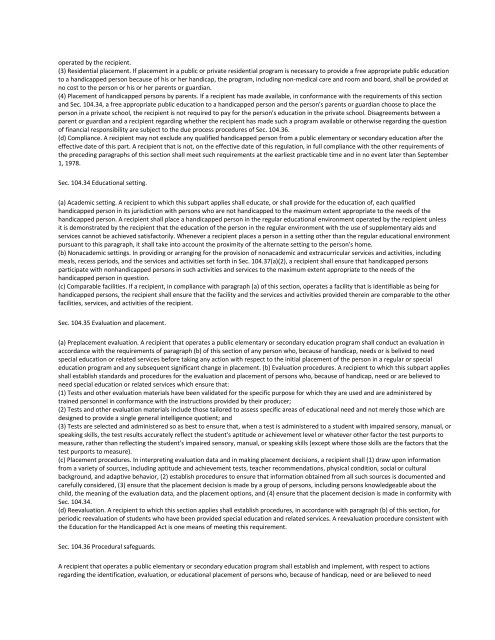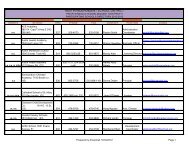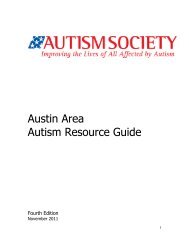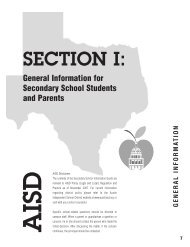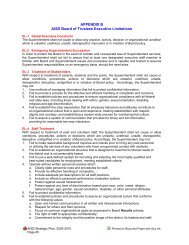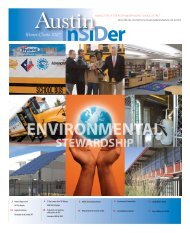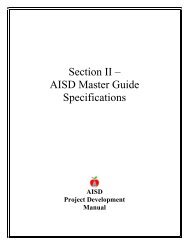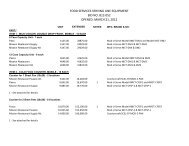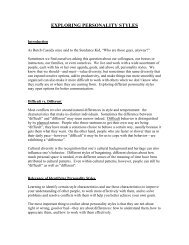operated by the recipient.(3) Residential placement. If placement in a public or private residential program is necessary to provide a free appropriate public educationto a handicapped person because of his or her handicap, the program, including non-medical care and room and board, shall be provided atno cost to the person or his or her parents or guardian.(4) Placement of handicapped persons by parents. If a recipient has made available, in conformance with the requirements of this sectionand Sec. 104.34, a free appropriate public education to a handicapped person and the person's parents or guardian choose to place theperson in a private school, the recipient is not required to pay for the person's education in the private school. Disagreements between aparent or guardian and a recipient regarding whether the recipient has made such a program available or otherwise regarding the questionof financial responsibility are subject to the due process procedures of Sec. 104.36.(d) Compliance. A recipient may not exclude any qualified handicapped person from a public elementary or secondary education after theeffective date of this part. A recipient that is not, on the effective date of this regulation, in full compliance with the other requirements ofthe preceding paragraphs of this section shall meet such requirements at the earliest practicable time and in no event later than September1, 1978.Sec. 104.34 Educational setting.(a) Academic setting. A recipient to which this subpart applies shall educate, or shall provide for the education of, each qualifiedhandicapped person in its jurisdiction with persons who are not handicapped to the maximum extent appropriate to the needs of thehandicapped person. A recipient shall place a handicapped person in the regular educational environment operated by the recipient unlessit is demonstrated by the recipient that the education of the person in the regular environment with the use of supplementary aids andservices cannot be achieved satisfactorily. Whenever a recipient places a person in a setting other than the regular educational environmentpursuant to this paragraph, it shall take into account the proximity of the alternate setting to the person's home.(b) Nonacademic settings. In providing or arranging for the provision of nonacademic and extracurricular services and activities, includingmeals, recess periods, and the services and activities set forth in Sec. 104.37(a)(2), a recipient shall ensure that handicapped personsparticipate with nonhandicapped persons in such activities and services to the maximum extent appropriate to the needs of thehandicapped person in question.(c) Comparable facilities. If a recipient, in compliance with paragraph (a) of this section, operates a facility that is identifiable as being forhandicapped persons, the recipient shall ensure that the facility and the services and activities provided therein are comparable to the otherfacilities, services, and activities of the recipient.Sec. 104.35 Evaluation and placement.(a) Preplacement evaluation. A recipient that operates a public elementary or secondary education program shall conduct an evaluation inaccordance with the requirements of paragraph (b) of this section of any person who, because of handicap, needs or is belived to needspecial education or related services before taking any action with respect to the initial placement of the person in a regular or specialeducation program and any subsequent significant change in placement. (b) Evaluation procedures. A recipient to which this subpart appliesshall establish standards and procedures for the evaluation and placement of persons who, because of handicap, need or are believed toneed special education or related services which ensure that:(1) Tests and other evaluation materials have been validated for the specific purpose for which they are used and are administered bytrained personnel in conformance with the instructions provided by their producer;(2) Tests and other evaluation materials include those tailored to assess specific areas of educational need and not merely those which aredesigned to provide a single general intelligence quotient; and(3) Tests are selected and administered so as best to ensure that, when a test is administered to a student with impaired sensory, manual, orspeaking skills, the test results accurately reflect the student's aptitude or achievement level or whatever other factor the test purports tomeasure, rather than reflecting the student's impaired sensory, manual, or speaking skills (except where those skills are the factors that thetest purports to measure).(c) Placement procedures. In interpreting evaluation data and in making placement decisions, a recipient shall (1) draw upon informationfrom a variety of sources, including aptitude and achievement tests, teacher recommendations, physical condition, social or culturalbackground, and adaptive behavior, (2) establish procedures to ensure that information obtained from all such sources is documented andcarefully considered, (3) ensure that the placement decision is made by a group of persons, including persons knowledgeable about thechild, the meaning of the evaluation data, and the placement options, and (4) ensure that the placement decision is made in conformity withSec. 104.34.(d) Reevaluation. A recipient to which this section applies shall establish procedures, in accordance with paragraph (b) of this section, forperiodic reevaluation of students who have been provided special education and related services. A reevaluation procedure consistent withthe Education for the Handicapped Act is one means of meeting this requirement.Sec. 104.36 Procedural safeguards.A recipient that operates a public elementary or secondary education program shall establish and implement, with respect to actionsregarding the identification, evaluation, or educational placement of persons who, because of handicap, need or are believed to need
special instruction or related services, a system of procedural safeguards that includes notice, an opportunity for the parents or guardian ofthe person to examine relevant records, an impartial hearing with opportunity for participation by the person's parents or guardian andrepresentation by counsel, and a review procedure. Compliance with the procedural safeguards of section 615 of the Education of theHandicapped Act is one means of meeting this requirement.Sec. 104.37 Nonacademic services.(a) General. (1) A recipient to which this subpart applies shall provide non-academic and extracurricular services and activities in suchmanner as is necessary to afford handicapped students an equal opportunity for participation in such services and activities.(2) Nonacademic and extracurricular services and activities may include counseling services, physical recreational athletics, transportation,health services, recreational activities, special interest groups or clubs sponsored by the recipients, referrals to agencies which provideassistance to handicapped persons, and employment of students, including both employment by the recipient and assistance in makingavailable outside employment.(b) Counseling services. A recipient to which this subpart applies that provides personal, academic, or vocational counseling, guidance, orplacement services to its students shall provide these services without discrimination on the basis of handicap. The recipient shall ensurethat qualified handicapped students are not counseled toward more restrictive career objectives than are nonhandicapped students withsimilar interests and abilities.(c) Physical education and athletics. (1) In providing physical education courses and athletics and similar programs and activities to any of itsstudents, a recipient to which this subpart applies may not discriminate on the basis of handicap. A recipient that offers physical educationcourses or that operates or sponsors interscholastic, club, or intramural athletics shall provide to qualified handicapped students an equalopportunity for participation in these activities.(2) A recipient may offer to handicapped students physical education and athletic activities that are separate or different from those offeredto nonhandicapped students only if separation or differentiation is consistent with the requirements of Sec. 104.34 and only if no qualifiedhandicapped student is denied the opportunity to compete for teams or to participate in courses that are not separate or different.Sec. 104.38 Preschool and adult education programs.A recipient to which this subpart applies that operates a preschool education or day care program or activity or an adult education programor activity may not, on the basis of handicap, exclude qualified handicapped persons from the program or activity and shall take into accountthe needs of such persons in determining the aid, benefits, or services to be provided under the program or activity.Sec. 104.39 Private education programs.(a) A recipient that operates a private elementary or secondary education program may not, on the basis of handicap, exclude a qualifiedhandicapped person from such program if the person can, with minor adjustments, be provided an appropriate education, as defined in Sec.104.33(b)(1), within the recipient's program.(b) A recipient to which this section applies may not charge more for the provision of an appropriate education to handicapped persons thanto nonhandicapped persons except to the extent that any additional charge is justified by a substantial increase in cost to the recipient.(c) A recipient to which this section applies that operates special education programs shall operate such programs in accordance with theprovisions of Secs. 104.35 and 104.36. Each recipient to which this section applies is subject to the provisions of Secs. 104.34, 104.37, and104.38.Text of amendments passed Sept. 25, 2008:PUBLIC <strong>LA</strong>W 110–325—SEPT. 25, 2008 122 STAT. 3553Public Law 110–325 110th CongressAn ActTo restore the intent and protections of the Americans with Disabilities Act of 1990.Be it enacted by the Senate and House of Representatives of the United States of America in Congress assembled,SECTION 1. SHORT TITLE.This Act may be cited as the ‘‘ADA Amendments Act of 2008’’.
- Page 3 and 4:
Tabla de ContenidosPrólogo .......
- Page 5 and 6:
PrólogoLa lectura es una de las ha
- Page 7 and 8:
Un agradecimiento especial a las si
- Page 9 and 10:
El manual sobre la dislexia contien
- Page 11 and 12:
Las características de la dislexia
- Page 13 and 14:
II.Procedimientos para evaluar a es
- Page 15 and 16:
El primer paso en el proceso de eva
- Page 17 and 18:
• Ser seleccionados y administrad
- Page 19 and 20:
Además, el personal que participa
- Page 21 and 22:
no debe considerar los efectos de m
- Page 23 and 24:
IV.Modelo de instrucción para estu
- Page 25 and 26:
• Instrucción individualizada en
- Page 27 and 28:
Washington, DC: National Institute
- Page 29 and 30:
o Morfologíao Ortografíao Semánt
- Page 31 and 32:
Esta página se ha dejado en blanco
- Page 33 and 34:
AgradecimientosEsta guía ha sido c
- Page 35 and 36:
Esta página se ha dejado en blanco
- Page 37 and 38:
Respuesta a la Intervención (RtI,
- Page 39 and 40:
Fidelidad en la implementaciónLos
- Page 41 and 42:
énfasis del progreso planificado y
- Page 43 and 44:
para la implementación exitosa de
- Page 45 and 46:
• Comprar o desarrollar sus propi
- Page 47 and 48:
desarrollo de las habilidades y la
- Page 49 and 50:
de instrucción que utilizan métod
- Page 51 and 52:
Añadida por el Acto de 2009, 81 a
- Page 53 and 54:
(B) 45 horas de contacto en cursos
- Page 55 and 56:
SUBCHAPTER E. DENEGACIÓN DE LA LIC
- Page 57 and 58:
Añadida por el Acto de 2009, 81 a
- Page 59: Apéndice F: AcomodosAcomodos en el
- Page 62 and 63: tipos de preguntas de la prueba, es
- Page 64 and 65: educación del estudiante. Así, un
- Page 66 and 67: los fondos de educación especial p
- Page 68 and 69: 18. ¿Quién es la persona encargad
- Page 70 and 71: • Si durante la intervención de
- Page 72 and 73: identificado como “alumno en ries
- Page 74 and 75: estrategias de instrucción, donde
- Page 76 and 77: 42. ¿Quién determina el contenido
- Page 78 and 79: De acuerdo con la Oficina de Derech
- Page 80 and 81: Apéndice H: Contactos para mayor i
- Page 82 and 83: OrganizacionesNota: Esta no es una
- Page 84 and 85: Hospital para niños Scottish Rite
- Page 86 and 87: Dislexia: la dislexia es una discap
- Page 88 and 89: Investigaciones basadas en un marco
- Page 90 and 91: Foorman, B. (Ed.) (2003). Preventin
- Page 92 and 93: Apéndice K: Preparación para la e
- Page 94 and 95: No. Sin embargo, si usted desea que
- Page 96 and 97: eficaz también. La escuela tambié
- Page 98 and 99: Para pedir copias de esta publicaci
- Page 100 and 101: • Si la información evaluativa n
- Page 102 and 103: Apéndice M: Sección 504 Código d
- Page 104 and 105: (e) Assistant Secretary means the A
- Page 106 and 107: that resulted in limited participat
- Page 108 and 109: applicants for employment to indica
- Page 112 and 113: SEC. 2. FINDINGS AND PURPOSES.(a) F
- Page 114 and 115: ‘‘(E)(i) The determination of w
- Page 116 and 117: COMPLIANCE STATEMENTTITLE VI, CIVIL


